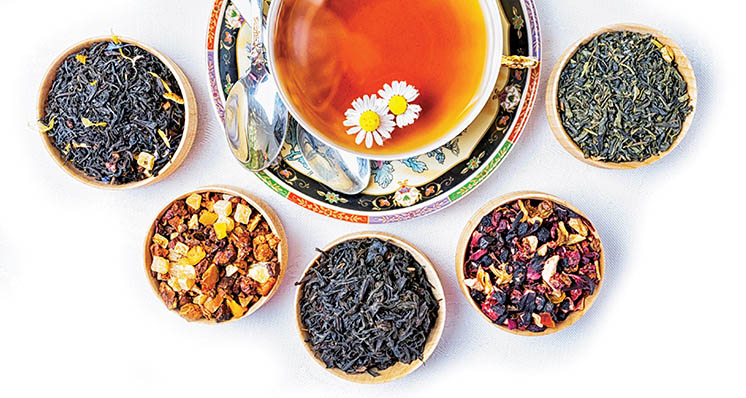The Chai Story of India
Biz@India
September-October 2017
India is one of the leading tea exporters of the world, but why is there almost no existence of any Indian tea brand in the global market?
The tea industry has a critical position in the Indian economy. Tea is India’s primary beverage, with almost 85 pc of total households in the country consuming it either with or without milk and sugar. India is the world’s second-largest producer (after China) and second-largest consumer of tea accounting for 25-27 pc of world tea production. It is also one of the top tea exporters, with around 10-12 pc share of world exports. European countries holding a strong tea tradition have always been a strong tea export market for India. The British, German, Polish and French tea consumers are typical fans of fine flavoured Darjeeling tea that is only produced in India. But the consumer retail packets available in the European market look completely different from what we find in India; they are packaged in Europe by the local packaging companies. However, the flow of export from India has been continuing since ages in bulk quantity, but without any label.
Explains D P Maheshwari, MD & CEO, Jay Shree Tea: “India has never tried to sell consumer label packs in Europe. Unfortunately, we have remained the wholesale exporters of tea for decades. Our company is one of the biggest tea exporters in India and we export a variety of Indian tea to 41 countries – to not only almost all the major countries of Europe like the United Kingdom (UK) and Germany; but also to the United States of America (US) and the Middle East. Even we have not been able to market our own brand. But I must say, very recently and fortunately some brands like Wagh Bakri, Madhu Jayanti have started introducing their branded label packs before the Indian community living abroad, especially in Europe. It is a very costly affair, but if Indian tea has to survive, we have to go for the branding like Sri Lanka has already done.”
It is interesting to note, while Indian companies are majorly reluctant to sell their own produces with their brands and labels, European companies are actually re-exporting the same tea within the region and trading it at a much higher price, as there is almost no tea production in the entire continent.
“It all depends on the Indian companies who want or do not want to sell their brands in Europe. In Europe, private labelled brands work well and we depend on the buyers’ demand. There is nothing called Indian tea as a brand. We have types of Assam Tea, Darjeeling Tea, Nilgiri Tea, etc. As far as we are concerned, we are doing quite well in the Scandinavian countries with private labels. But at the same time, we are also venturing into introducing our own brand Jay Tea in Europe in consumer packs and will wait to see how it catches on in the market,” comments Parag Mehta, DGM (Speciality Tea), Madhu Jayanti International Ltd.
The apex authority of tea industry in India has a different point to make. Though there was acceptance of the fact that market of Indian tea is a bit down in Europe, the absence of brand identity of Indian tea in the global market was left open-ended. What Sri Lanka has been able to do, is to successfully brand Ceylon Tea with various consumer brands and make it readily available and popular in the global markets.
“The reality is that we are a little down in the European market. But enough packaging companies are there and the demand for ‘Made in India’ tea is also quite high, especially from countries like Germany, etc. Europe is the market for organic but orthodox Indian tea, to be precise, Darjeeling Tea. Of late, we have seen a little slump in the European market, as truly we are not being able to supply Darjeeling Tea as much as we should be able to export. These markets are also very sensitive. We do have a tea export and promotion policy in place that we keep evolving with the changing time but we don’t think that there is any dearth of outlets to sell Indian tea,” says S Soundararajan, director (Tea Development) and secretary, Tea Board of India.
On a lighter note, perhaps one particular phrase can now actually come close to being branded as Indian tea, i.e., Masala Chai, literally meaning mixed-spice tea now often being identified as ‘Indian Tea’.
Barbara Dufrêne, the former secretary general of the European Tea Committee and editor of La Nouvelle Presse du Thé recently wrote: “There is also the Masala Chai, which is prepared by brewing black tea together with a mixture of spices that are simmered directly in the milk. This delicious, sweet and spicy cup, which has gained great popularity outside India in the recent years, is now often, although erroneously, called simply Chai in the west, instead of Masala Chai. Furthermore, the term Chai tea, although a tautology, since it means ‘tea tea’, is more commonly understood to mean spicy milk tea in the western markets and is considered a special kind of tea preparation.”
Thus, while there might not be specific brands in the world market that are immediately identifiable as Indian tea brands, Indian tea however has continued to proliferate in the market at an intrinsic level.










